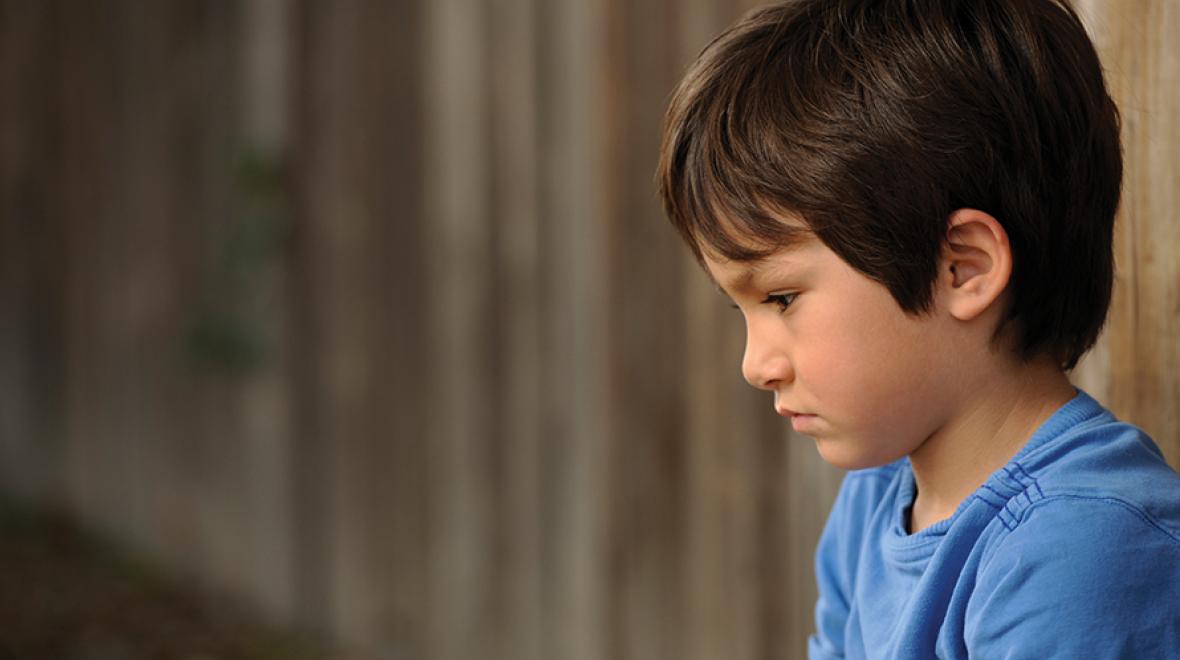
When young Cody* of Tacoma joined the peer inclusion preschool at his neighborhood public school, he fit in from the start. His class was a mix of neurotypical “peer mentors” and children with disabilities, including students like Cody, with apraxia of speech, a motor speech disorder that makes communication complicated. The school’s curriculum encouraged understanding and advocating for students with disabilities, says Cody’s mom, and he felt accepted and included.
Because the peer inclusion program wasn’t offered after preschool, Cody enrolled in another local school for kindergarten. That’s when the bullying started; Cody began experiencing harassment and physical bullying nearly every day, mostly from students in his own class. When he reacted, he was punished by missing recess or simply sitting in “time-out,” recalls his mother, an active member of the Tacoma Special Needs PTA. “We were getting four, five, six disciplinary notices every week, and I knew something was really wrong, because that wasn’t an issue at his other school.”
Bullying and disability
Bullying at school — defined in Washington state as disrupting or interfering with a student’s educational environment through intimidating, threatening or physically harming a student or the student’s belongings — is a very common experience for students with disabilities. While around 10 percent of neurotypical kids experience bullying, the number jumps fivefold for students with disabilities.
Though bullying is harmful to all children, it’s especially hurtful for children with disabilities. Kids with certain conditions that affect speech or communication may not be able to tell teachers or caregivers what they’re experiencing, making bullying harder to identify and correct, says David Camenisch, M.D., MPH, a psychiatrist with Seattle Children’s Autism Center. “A child with special needs who is bullied may internalize their distress, becoming disruptive at school or at home, developing feeding or toileting problems, or [experiencing] physical complaints, such as stomachaches or headaches.”
And bullying doesn’t just harm the child being bullied. Bullying negatively impacts students who observe it — the so-called bystanders — along with teachers and adults connected to the school. “Bullying is insidious because it erodes feelings of confidence and safety, not only for those directly involved in bullying, but for bystanders, teachers and parents,” says Camenisch.
School districts are starting to take notice. “In recent years, there’s been greater awareness and more education around what bullying is as it relates to students with disabilities, and the fact that students with disabilities have protections under the law,” says Jen Cole, M.A., director of Parent Training and Information with Tacoma’s Partnerships for Action, Voices for Empowerment (PAVE), which provides support and resources for individuals, youths and families impacted by disabilities.
All states have anti-bullying laws to protect kids (Washington’s are listed here). Students with an identified disability have additional layers of civil rights protection through the federally guaranteed right to a free, appropriate public education (sometimes referred to as FAPE).
Awareness of the impacts of bullying on multicultural and English-learning children with disabilities is also increasing, Cole says, thanks to the advocacy efforts led by caregivers and organizations like Open Doors for Multicultural Families.
“Students with disabilities experience a lot of intersectionality with identity,” says Cole. “That means that when a student with a disability is also transitional bilingual, English-learning, a student of color or experiencing homelessness, they’re more vulnerable to bullying and also have less access to resources to help.”
Peer advocacy — teaching students to stand up for others — can be one of the most effective forms of anti-bullying education.
How adults — and kids — can help
When it comes to bullying, caregivers for students with disabilities can’t afford to be unprepared, says Cole. “I encourage families to be proactive, because it’s so hard when it happens and we are unprepared,” she says.
One of the best ways to prepare: Make your child’s individualized education plan (IEP) or 504 plan part of your anti-bullying toolkit. “Make this [harassment, intimidation and bullying] part of your student’s IEP meeting so that things like social-emotional growth and self-determination become something you’re talking about regularly with the school,” Cole advises.
Self-determination, or the student’s ability to voice their own needs and wants, can be a benchmark within an IEP plan, as well as a school-wide focus. “A healthy school climate is one in which everyone is actively working on skills such as showing respect, being safe and being responsible, and specific skills related to bullying, specifically self-determination — students learning how to speak up for themselves,” says Cole.
While anti-bullying education is now common in schools, some programs are more effective than others. Peer advocacy — teaching students to stand up for others — can be one of the most effective forms of anti-bullying education, says Camenisch. “Bullies are more responsive to peers pointing out that their behavior is wrong than they are to adults.”
Outside of school, caregivers can help encourage the growth of proactive social skills that help protect kids from bullying, says Camenisch. “Proactive social skills include the ability to identify and respond to bullying, situational awareness and very fundamentally knowing ‘what is a friend.’”
Role-playing through potential playground interactions and reading books like “Don’t Pick on Me” by Susan Eikov Green are two more ways parents can help promote proactive social skills, says Camenisch.
A combination of peer advocacy and parent-to-parent education shifted the climate in Cody’s kindergarten classroom. His mother used social media and the classroom contact list to educate other parents about Cody’s condition and to ask for their support. As the class learned more about disability and bullying, Cody’s primary tormenter ended up becoming a strong peer advocate. “It was an exhausting few months, but it made me aware of the resources that are available for things like this,” she says.
Most importantly, Cody now feels accepted and included at his school, she says. “He absolutely loves his friends. He just wants to feel like everyone else.” Bullying isn’t a learning experience anyone wants for their child — it’s far too damaging and dangerous. “But addressing bullying can be very empowering for kids and for adults,” says Camenisch. “It can jump-start learning and give kids an opportunity to help others understand their unique challenges.”
“It is possible to navigate this successfully,” he adds, “but it takes a team.”
*Not his real name
Anti-bullying resources for families of children with disabilities
|











